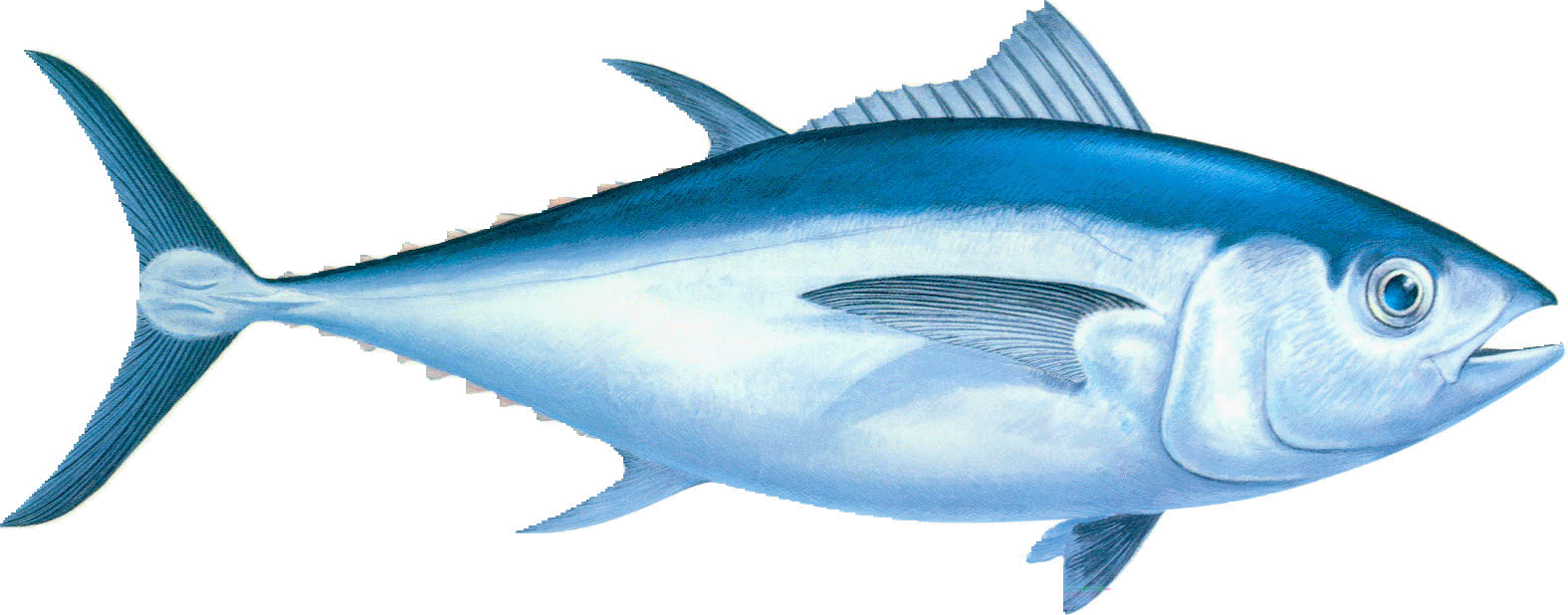
Bigeye Tuna
Bigeye tuna (Thunnus obesus) have a shallow notch at the center of the caudal fin fork and, in adults, the eye is relatively large compared with that of other tunas. Their entire dorsal and ventral body profiles are evenly curved. The liver has noticeable striations and its central lobe is the longest. The pectoral fin in adult bigeye tuna is one-quarter to one-third the body fork length, whereas the pectoral fin in juvenile bigeye tuna is longer and always extends beyond a line drawn between the anterior edges of the second dorsal and anal fins. Bigeye tuna less than 75cm in fork length (10kg whole weight) have longer pectoral fins than yellowfin tuna of comparable sizes. Juvenile bigeye tuna often have 7-10 white unbroken stripes crossing the lower sides vertically, substantially fewer than in juvenile yellowfin tuna.
Bigeye tuna are found in tropical and subtropical waters of the Pacific, Indian and Atlantic oceans. They are an oceanic fish, found when surface temperatures exceed 17°C. Juvenile bigeye tuna have not been reported outside tropical waters.
Bigeye tuna smaller than 20kg are mainly found with surface-dwelling schools of similar fish such as yellowfin tuna and skipjack tuna. Schools of only bigeye tuna are less common. Adults tend to be solitary.

© 1998 - 2022 EuroPacific Tuna Ltd